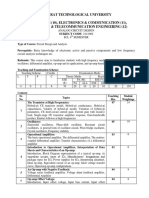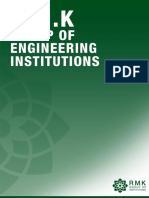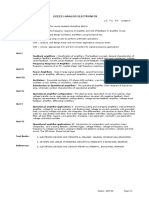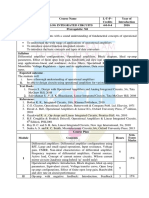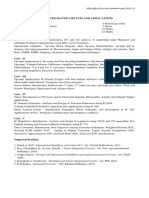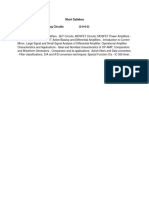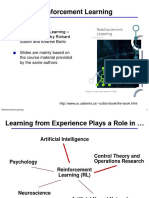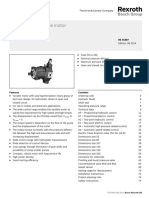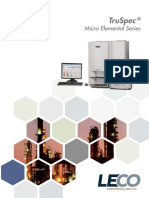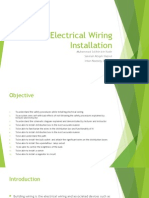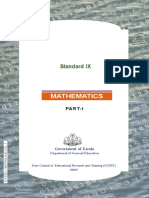Course Code Course name L T P C
ECEG2065 Analog Electronics II 3 0 1 4
Total Units to be Covered: Total Contact Hours:
Prerequisite(s): Syllabus version:
Course Objectives
1. To help the learners to develop the ability to design the feedback amplifiers.
2. To enable students to design the amplifiers circuits using OP- Amps, used in biomedical
application.
3. To give students a perspective to appreciate the importance of timer ICs and regulators.
4. To enable students, acquire knowledge required for develop small hardware circuits for
some application like power supply design etc.
Course Outcomes
On completion of this course, the students will be able to
CO 1 Understand the concept of feedback circuits.
CO 2 Apply the concept of feedback in amplifiers and oscillators
CO 3 Analyse the operations of different ICs used in analog circuits.
CO 4 Design and implementation of circuits with the help of operational amplifiers for
different applications.
CO-PO Mapping
Program
Outcomes
PO1 PO2 PO3 PO4 PO5 PO6 PO7 PO8 PO9 PO10 PO11 PO12 PSO1 PSO2
Course
Outcome
s
CO 1 3 3 3 3 2 1 - - - - - 3 2 2
CO 2 3 3 3 3 2 1 - - - - - 3 2 2
CO 3 3 3 3 3 2 1 - - - - - 3 2 2
Average 3 3 3 3 2 1 - - - - - 3 2 2
1 – Weakly Mapped (Low) 2 – Moderately Mapped (Medium)
3 – Strongly Mapped (High) “_” means there is no correlation
Syllabus
�Unit I: 08 Lecture Hours
Feedback Amplifiers: Principle of Feedback Amplifier, Positive and Negative Feedback,
Properties of Negative Feedback, Amplifier Topologies, Negative Feedback Types: Voltage
series, Voltage Shunt, Current series, Current Shunt, Advantage of Negative Feedback, Ideal
Feedback amplifier, Effect of feedback on amplifier Bandwidth and stability.
Unit II: 06 Lecture Hours
Oscillators: Sinusoidal oscillator: Phase shift oscillators, Wien Bridge oscillator: Resonant circuit
oscillators: LC Colpitt & LC Hartley, Amplitude Frequency and phase stability analysis of all
Oscillators, Crystal oscillator.
Unit III: 10 Lecture Hours
Operational Amplifiers and its Application: Ideal op-amp characteristics, 741 op-amp IC
Specification, Inverting and Non Inverting amplifier, OP-amp as adder, Subtractor, Differentiator,
Integrator Circuit, Differential Amplifier, Active load, Level Shifter, Current Mirror, I-V and V-I
Conversion(CCVS, VCCS, VCVS), Peak detector, Comparator circuit, Sample and Hold Circuit,
Schmitt Trigger, Precision rectifier, Signal Generator: Square Wave Generator, Pulse
Generator, Triangular Wave Generator, Saw Tooth Wave generator, Instrumentation Amplifier,
Log and Antilog Amplifier, Active Filters: Introduction to filtering: Frequency response,
Characteristics and terminology, Active versus passive filter, first and Second order low pass
active filter, Higher order filters. High pass active filter, Band pass filter, Band reject filter, higher
order filters.
Unit IV: 15 Lecture Hours
Applications of Op-Amp: Timer and Regulator: IC-555 Timer, Internal Circuit, IC-555 Timer as A
stable Multivibrator and Monostable Multivibrator Voltage Regulators: OP-AMP Regulators, IC
Regulators, Fixed Voltage Regulators (78/79, XX), 723, Characteristics and Applications,
SMPS.
Analog and Digital interface circuits: A/D, D/A Converters and types, S/H circuits and
multiplexers and demultiplexers Switches, OTA, 556 PLL IC, PLL Fundamentals, PLL
Applications.
Unit V: 06 Lecture Hours
Power Amplifiers: Power Amplifiers: Harmonic Distortion in Amplifiers, Power Amplifiers and
types, Voltage verses Power Amplifier, Class A, B, AB, C, Push Pull Amplifiers.
Textbooks
1. Robert L. Boylestad, Louis Nashelsky (2009) Electronics Devices & Circuits, Pearson- R.L
Boylstad. ISBN: 978-8131727003.
Reference Books
1. Paul R. Gray, Paul J. Hurst, Stephen H. Lewis, Robert G. Meyer (2017) Analysis and Design
of Analog Integrated Circuits, Wiley. ISBN:978-1118078891.















